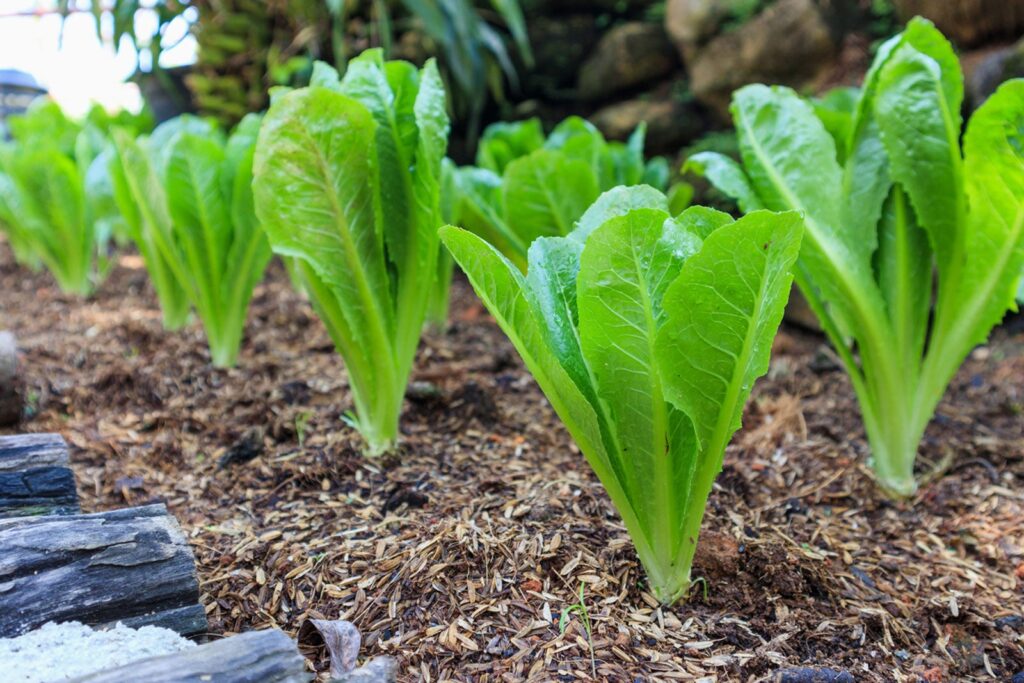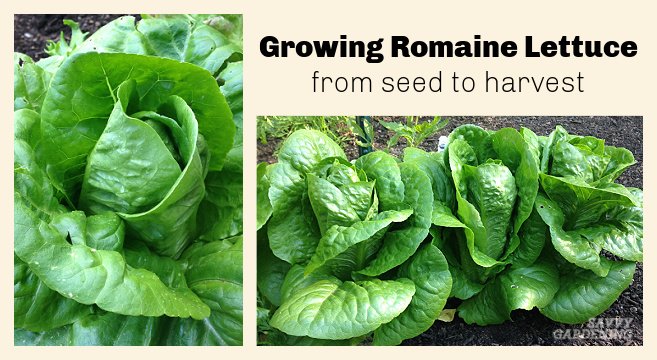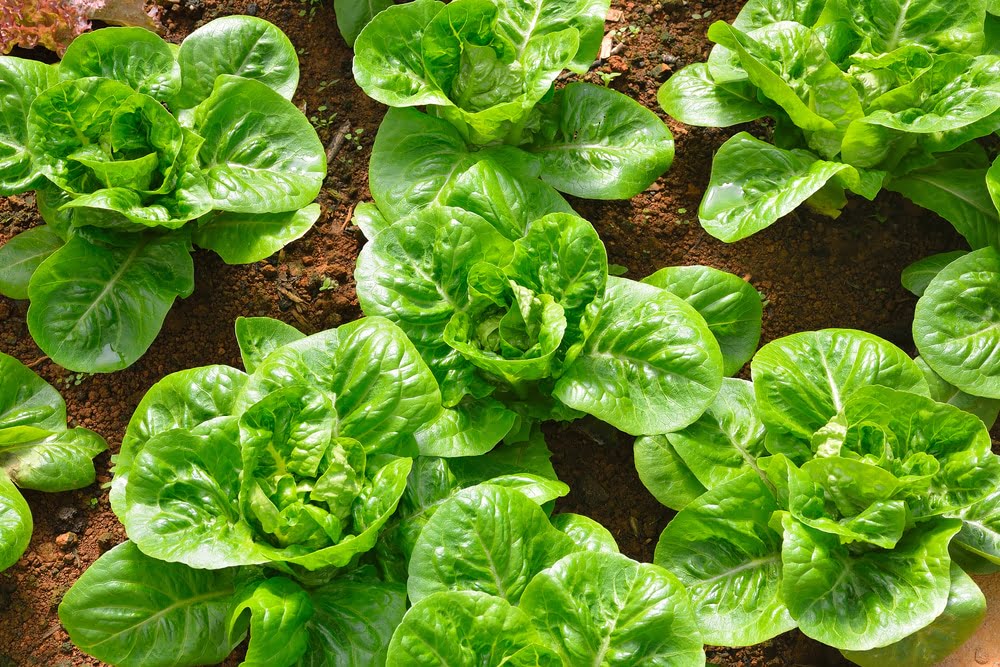When it comes to romaine lettuce, have you ever wondered how much sunlight it actually needs? Well, let me shed some light on the matter. Romaine lettuce, like many other plants, requires a certain amount of sunlight to thrive. In order to grow and develop into those crisp, leafy greens we love, romaine lettuce typically needs around 6-8 hours of direct sunlight each day. This article will explore the importance of sunlight for romaine lettuce and how it affects its growth and overall quality. So if you’ve ever found yourself pondering over the sun-kissed needs of this popular leafy green, keep reading to uncover all the sun-soaked secrets of romaine lettuce.

The Sunlight Requirements of Romaine Lettuce
Romaine lettuce, scientifically known as Lactuca sativa L. var. longifolia, is a popular leafy green vegetable that belongs to the lettuce family. It is known for its crisp texture, mild flavor, and high nutritional value. To successfully grow and cultivate romaine lettuce, it is crucial to understand its sunlight requirements. In this article, we will delve into the importance of sunlight for romaine lettuce, considerations for sunlight requirements, factors affecting those requirements, sunlight intensity and quality, providing adequate sunlight, monitoring sunlight exposure, adjusting sunlight exposure, and common issues and troubleshooting related to sunlight exposure.
Understanding Romaine Lettuce
Before diving into the sunlight requirements of romaine lettuce, it is essential to have a basic understanding of this leafy green vegetable. Romaine lettuce is a cool-season crop that thrives in moderate temperatures between 45°F (7°C) and 75°F (24°C). It has elongated leaves, forming a tall, upright head, which differentiates it from other lettuce varieties. Romaine lettuce is an excellent source of vitamins A, C, and K, as well as folate and fiber.
Importance of Sunlight for Romaine Lettuce
Sunlight plays a pivotal role in the growth and development of romaine lettuce. It is essential for the process of photosynthesis, where plants convert light energy into chemical energy, aiding in the production of sugars and promoting overall plant growth. Sunlight provides the energy required for the synthesis of carbohydrates, proteins, and other essential compounds necessary for the growth and well-being of romaine lettuce.
Considerations for Sunlight Requirements
To provide optimum growing conditions for romaine lettuce, several considerations must be taken into account regarding their sunlight requirements.
Natural Habitat of Romaine Lettuce
Romaine lettuce is believed to have originated in the Mediterranean region, where it thrived in an environment with ample sunlight. The native habitat of romaine lettuce influences its preference for specific light conditions, making it important to replicate those conditions in cultivation.
Photoperiodic Response
Romaine lettuce is a short-day plant, meaning it requires longer periods of darkness than light to initiate the development of flower stalks and ultimately bolt. Understanding this photoperiodic response is crucial for ensuring proper cultivation and preventing premature bolting.
Importance of Sunlight for Photosynthesis
As mentioned earlier, sunlight is vital for photosynthesis, the process through which romaine lettuce synthesizes food for its growth. Adequate sunlight exposure ensures sufficient energy for the photosynthetic process, leading to healthier and more productive plants.
Optimal Sunlight Duration
Determining the optimal duration of sunlight for romaine lettuce is crucial for achieving optimal growth. While the specific sunlight duration may vary depending on various factors, there are general guidelines to consider.
Full Sun Exposure
Romaine lettuce thrives in full sun exposure, which typically refers to a minimum of six hours of direct sunlight daily. Full sun exposure promotes maximum photosynthetic activity and overall healthy growth. Plants receiving full sun exposure tend to have shorter internodes, denser heads, and richer coloration.
Partial Sun Exposure
In situations where full sun exposure is not possible, romaine lettuce can tolerate partial sun exposure. This refers to receiving three to six hours of direct sunlight. While the growth and productivity may be slightly reduced compared to full sun exposure, romaine lettuce can still develop adequately under these conditions.
Shade Tolerance
Romaine lettuce inherently prefers full sun exposure, but it does have a certain degree of shade tolerance. If grown in areas with limited direct sunlight, choosing varieties that are more shade-tolerant or adjusting cultivation techniques can help optimize growth and yield.
Factors Affecting Sunlight Requirements
Several factors can influence the sunlight requirements of romaine lettuce. Considering these factors when planning the cultivation of romaine lettuce is crucial for determining the ideal location and conditions.
Geographic Location
The geographic location of the cultivation area significantly impacts the available sunlight throughout the year. Two primary location factors to consider are latitude and longitude.
Latitude and Longitude
As a general rule, areas closer to the equator receive more intense sunlight year-round, while higher latitudes experience more significant variations in sunlight intensity and duration. Understanding the specific climate and seasonal changes in the chosen geographic location is essential for meeting the optimal sunlight requirements of romaine lettuce.
Elevation
Elevation also affects sunlight intensity and duration. Higher elevations tend to have thinner atmospheres, resulting in stronger sunlight and potentially higher light intensity. However, extreme elevation can also expose plants to harsher weather conditions and temperature fluctuations.

Sunlight Intensity and Quality
Sunlight is not solely about duration but also encompasses intensity and quality. These factors can have profound effects on romaine lettuce growth and development.
Sunlight Intensity
Sunlight intensity refers to the strength of the light hitting the plants. It is influenced by factors such as geographic location, time of year, cloud cover, and local climate conditions. Higher sunlight intensity generally leads to increased photosynthetic activity and faster growth rates.
Sunlight Quality
Sunlight quality involves the spectrum of light and various wavelengths that reach the plants. The spectrum of light includes different colors, with each color affecting plant growth differently.
Spectrum of Light
Different wavelengths of light are essential for specific stages of plant growth. Blue light promotes compact, stocky growth, while red light stimulates leaf development and flowering. Understanding the spectrum of light and its impact on romaine lettuce growth can help manipulate and optimize growth patterns.
Heat and UV Radiation
Excessive heat and ultraviolet (UV) radiation can negatively impact romaine lettuce. High temperatures can lead to stress, reduced growth, wilting, and even sunburn. UV radiation can also cause damage to the leaves and reduce overall plant health. Optimal sunlight conditions promote growth without posing excessive heat stress or UV damage risks.
Providing Adequate Sunlight
To ensure romaine lettuce receives adequate sunlight, various cultivation methods and techniques can be employed.
Outdoor Cultivation
Outdoor cultivation is the most common method for growing romaine lettuce. By selecting an appropriate cultivation area with sufficient sunlight exposure, the plants can thrive. Planting in raised beds or pots can also help optimize sunlight exposure by ensuring proper drainage and avoiding shading from surrounding vegetation.
Indoor Cultivation
In situations where outdoor space is limited or climate conditions are unfavorable, indoor cultivation allows for year-round romaine lettuce cultivation. Utilizing greenhouses or grow lights, growers can provide the necessary light conditions for romaine lettuce growth, even in unfavorable climates or low-light areas.
Artificial Lighting
Artificial lighting, such as fluorescent, LED, or high-intensity discharge (HID) grow lights, can supplement natural sunlight or completely replace it for indoor cultivation. These lights can provide specific light spectrums and adjustable intensity, allowing growers to mimic ideal sunlight conditions for romaine lettuce growth.

Monitoring Sunlight Exposure
Monitoring the sunlight exposure received by romaine lettuce is crucial to ensure its needs are met and make necessary adjustments as required.
Light Meters
Using light meters can provide quantitative measurements of light intensity, helping growers gauge the amount of sunlight available to their romaine lettuce. Light meters can assist in identifying areas of the cultivation space that may receive insufficient or excessive light.
Observation and Timing
Observing the growth patterns of romaine lettuce plants can also provide valuable insights into their sunlight requirements. Monitoring leaf color, overall plant health, and growth rates can help identify potential issues related to sunlight exposure. Additionally, timing the growth stages and bolting patterns can help determine whether sunlight duration and quality meet the required thresholds.
Adjusting Sunlight Exposure
In some instances, growers may need to adjust the sunlight exposure received by romaine lettuce to optimize growth.
Shading Techniques
If romaine lettuce is receiving excessive sunlight, shading techniques can be employed to reduce the intensity or duration of sunlight exposure. This can include using shade cloths or strategically placing the plants under existing shade structures.
Moving Containers
For outdoor cultivation, moving containers or raised beds can help optimize sunlight exposure by adjusting their position or orientation. This allows growers to take advantage of available sunlight angles throughout the day.
Rotation of Growing Area
In situations where crops are grown in the same area year after year, rotation of the growing area can help ensure that romaine lettuce receives sufficient sunlight. This technique prevents shading from neighboring plants that may have grown taller or larger over time.

Common Issues and Troubleshooting
Understanding common issues related to sunlight exposure in romaine lettuce cultivation can help growers troubleshoot and maintain optimal growing conditions.
Insufficient Sunlight Exposure
Insufficient sunlight exposure can lead to tall, leggy growth, pale leaves, and reduced overall plant vigor. If plants are not receiving adequate sunlight, adjusting their location or implementing artificial lighting can help mitigate the issue.
Sunburn and Heat Stress
Excessive sunlight exposure can result in sunburn and heat stress in romaine lettuce. Symptoms may include leaf scorching, wilting, or yellowing. Implementing shading techniques, adjusting the timing of sunlight exposure, or relocating the plants can alleviate the stress.
Leggy Growth
Leggy growth, characterized by elongated stems and sparse foliage, is often a sign of insufficient sunlight. Providing plants with more direct sunlight or adjusting their position to maximize light exposure can encourage compact and vigorous growth.
Bolting
Bolting, or the premature development of flower stalks, can occur if romaine lettuce does not receive adequate darkness during the day. This is particularly crucial for short-day plants like romaine lettuce. Adjusting the timing of light exposure or relocating the plants to an area with longer periods of darkness can help prevent bolting.
In conclusion, understanding the sunlight requirements of romaine lettuce is essential for successful cultivation. By considering factors such as its natural habitat, photoperiodic response, and the importance of sunlight for photosynthesis, growers can optimize sunlight duration and intensity. Factors like geographic location, elevation, and sunlight quality also influence the sunlight requirements of romaine lettuce. By providing adequate sunlight through outdoor cultivation, indoor cultivation, or artificial lighting, growers can ensure the healthy growth of romaine lettuce. Monitoring sunlight exposure, making necessary adjustments, and troubleshooting common issues related to sunlight exposure further contribute to successful cultivation. With proper sunlight conditions, romaine lettuce can flourish, providing fresh and nutritious leafy greens for your enjoyment.




